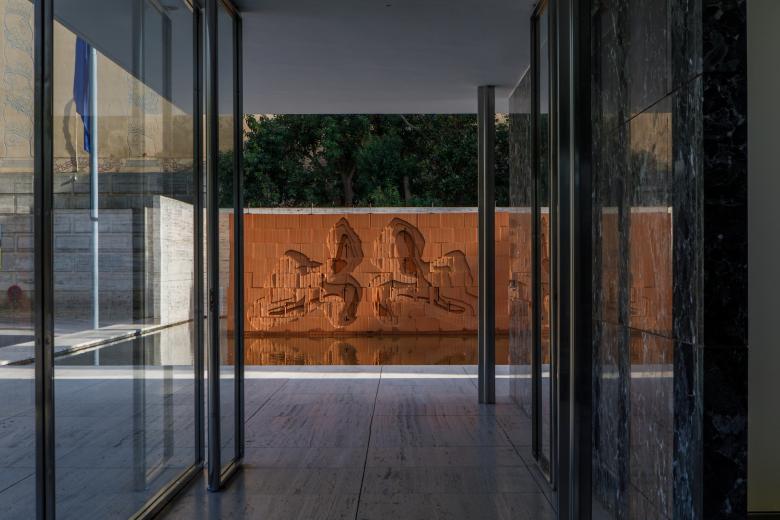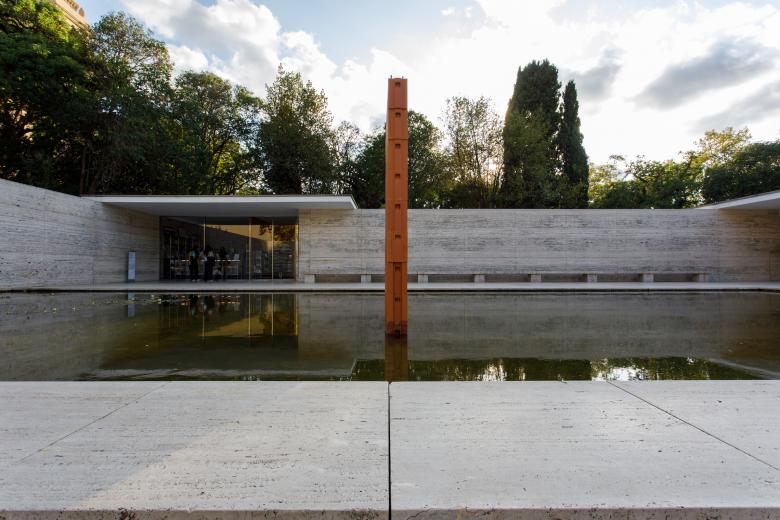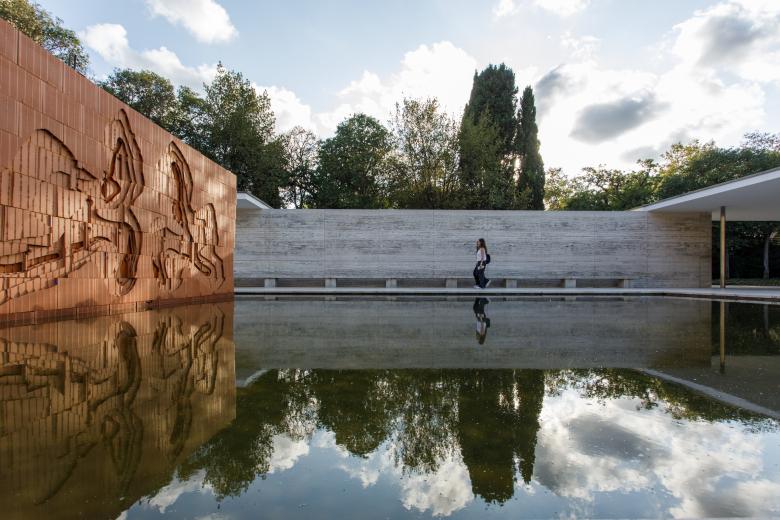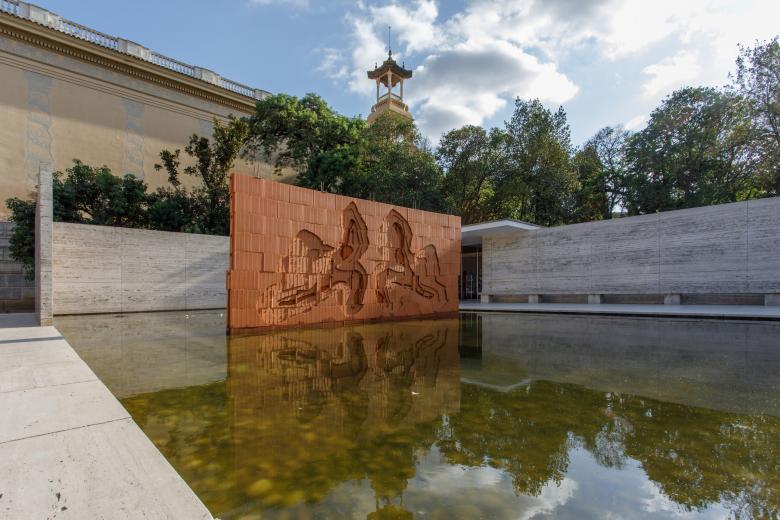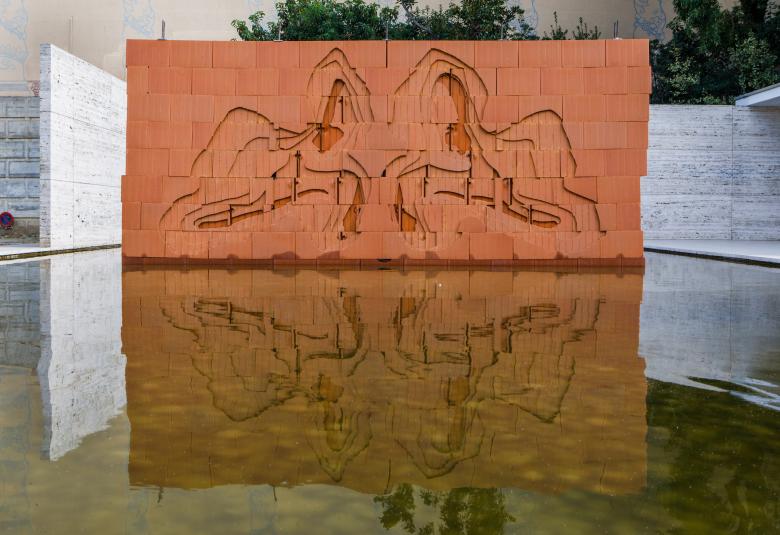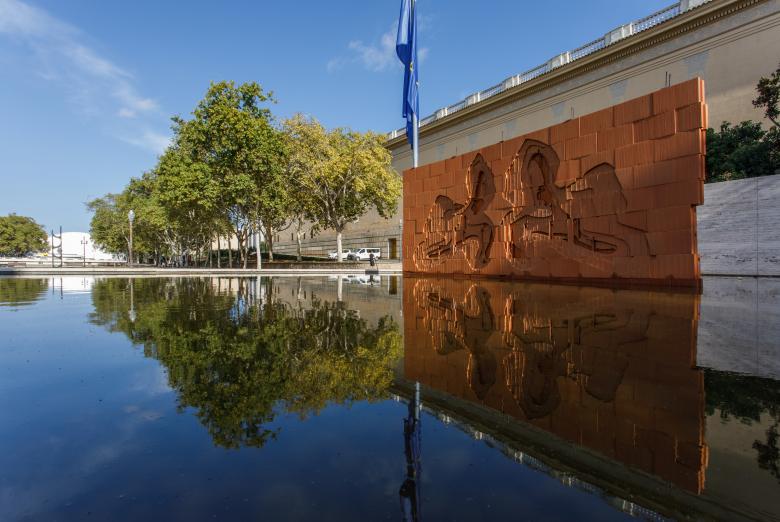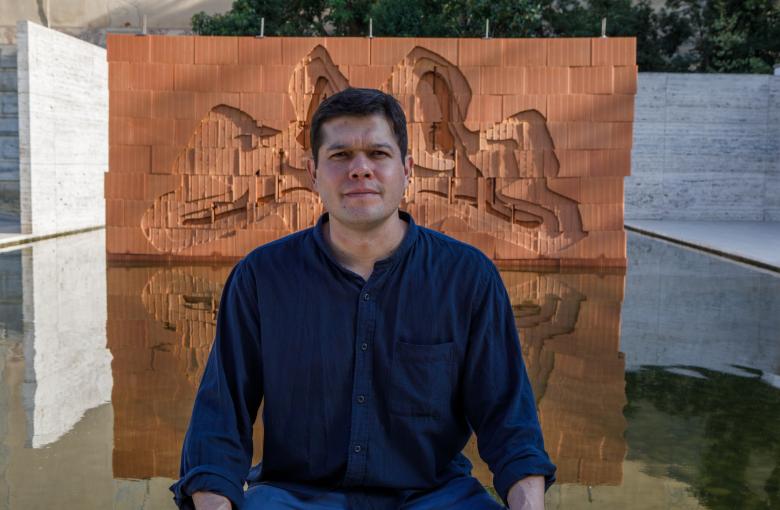Oscar Abraham Pabón's 'Psicoarquitectura' at the Barcelona Pavilion
A Terracotta 'Blot' on a Modern Masterpiece
Artist and architect Oscar Abraham Pabón has installed a terracotta wall on the pond of the Mies van der Rohe Pavilion in Barcelona. The temporary installation was inspired by the architecture of the pavilion but also the ink blots of the famous psychological tests created by Hermann Rorschach.
The pavilion designed by Ludwig Mies van der Rohe and Lilly Reich for the 1929 Barcelona International Exhibition is a masterpiece of modern architecture that can stand on its own. Even though architects and students of architecture have continued to flock to it since it was rebuilt in 1986, the pavilion's existence does not preclude it being a backdrop for contemporary statements in art and architecture. The Fundació Mies van der Rohe's ongoing stewardship of the building has led to numerous remarkable installations there: the oil-drum columns created by Luis Martínez Santa-María in 2016; Anna and Eugeni Bach covering the walls and roof in white vinyl one year later; Spencer Finch treating the ponds as rock gardens in 2018; Luftwerk painting lines of light across the pavilion's orthogonal surfaces the following year; and curators Ilka and Andreas Ruby transforming the pavilion into a domestic space in 2021, to name just a few.
For its latest temporary installation, on display from September 14 until October 8, the Fundació Mies van der Rohe collaborated with LAB 36 and Galería Senda to present Psicoarquitectura by Oscar Abraham Pabón. Take a visual tour through the installation below.
"If the German pavilion of 1929 symbolizes the future of the modern house, the proposal 'Psicoarquitectura' could offer an interpretation of the evolution of that modernity, but now from a psychic and somatized dimension. I understand the clay brick as a skin that covers a good part of the architecture and the city inherited from the modern project."
